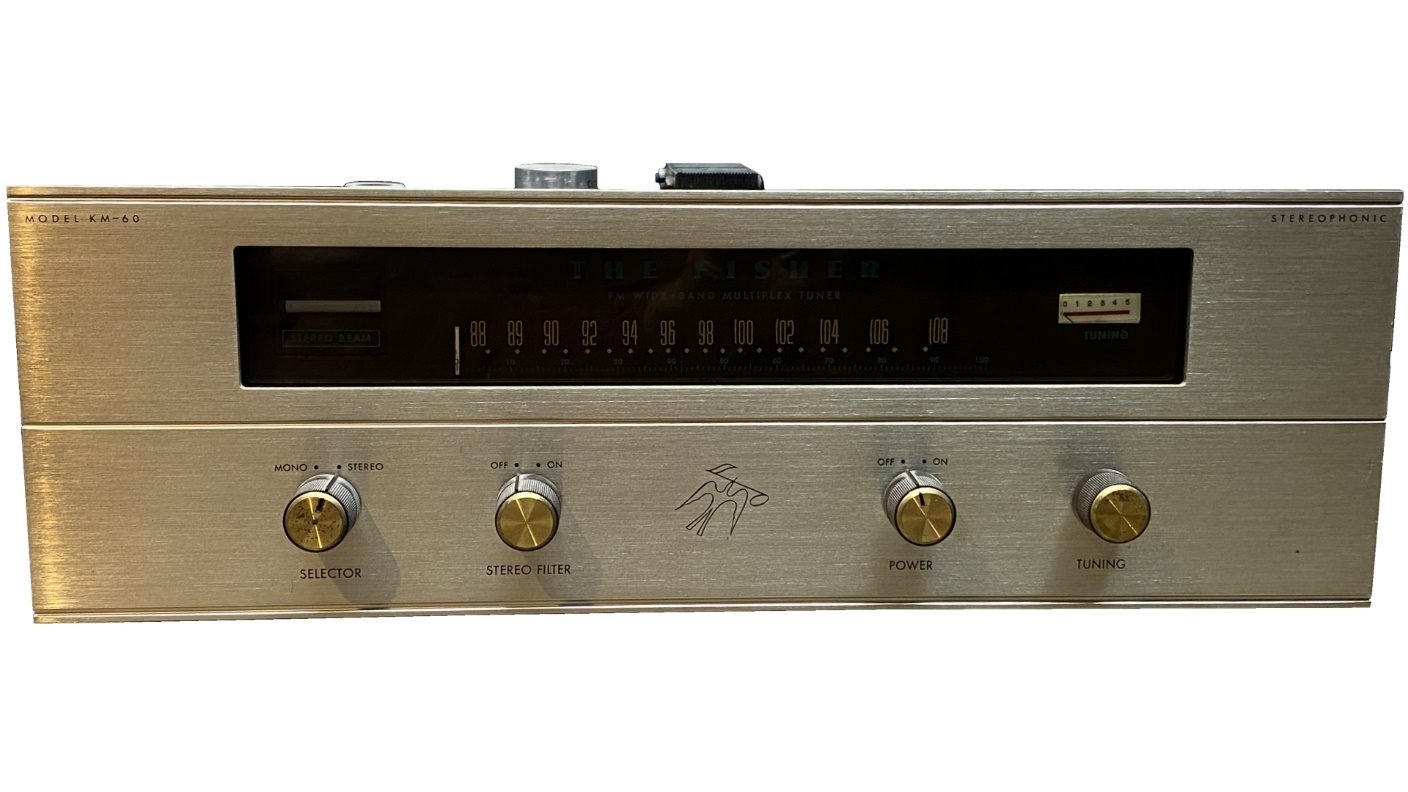
Fisher Radio Corporation entered the kit building business in late 1961 with their KX-200 integrated amplifier for $169.50. Some of Fisher’s competitors, including Dynaco, Eico, Harman Kardon and H.H. Scott, also offered products in kit form. The idea was to allow those who could not afford a factory assembled unit but who knew basic electronics and how to use a soldering iron an avenue to ownership of high-end audio equipment.
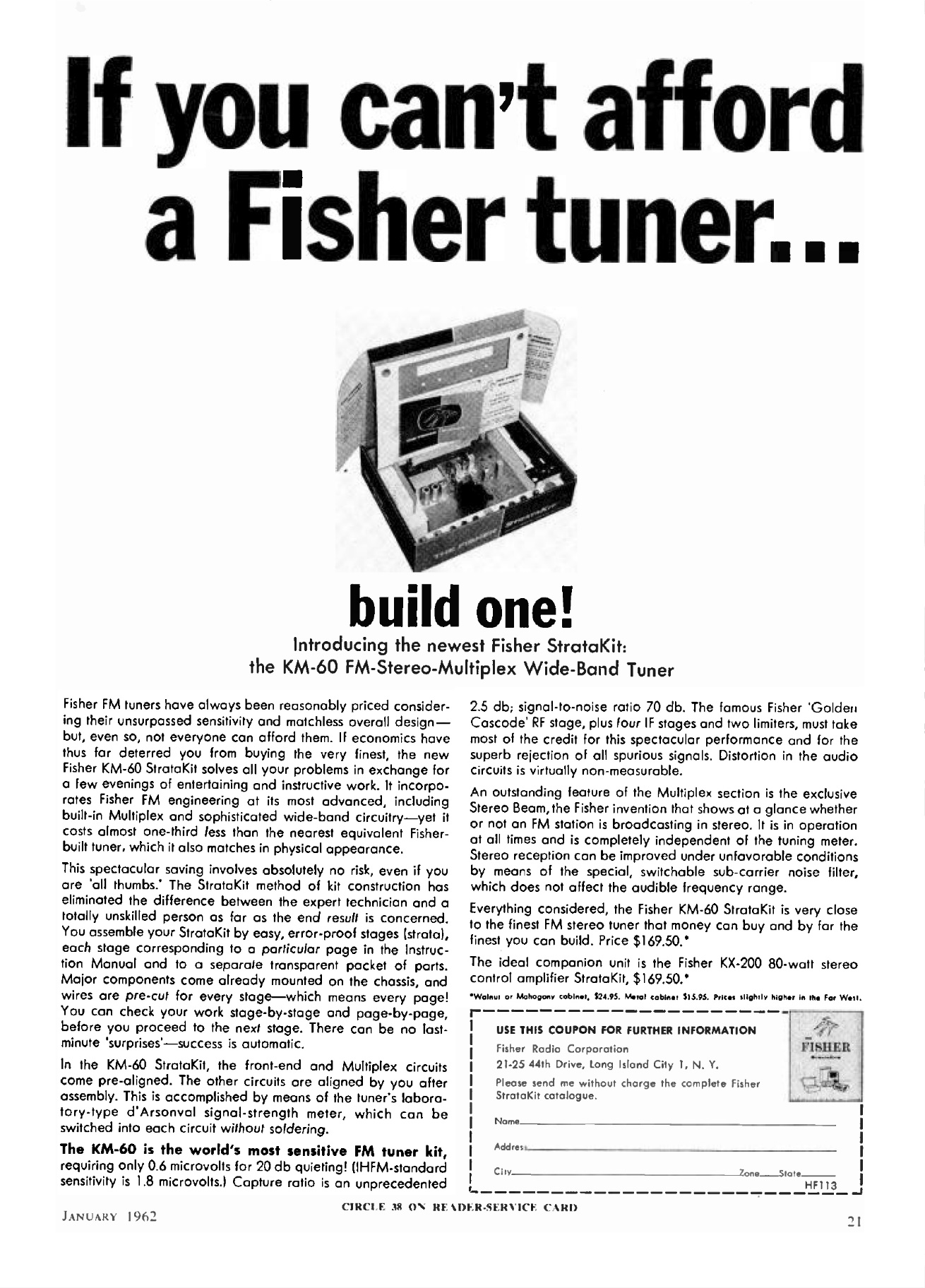
January 1962 introductory ad for The Fisher KM-60 StrataKit.
On or shortly before January 1962, Fisher added a kit tuner to go along with their KX-200 kit amplifier. The KM-60 StrataKit was not the same as any of Fisher’s factory assembled tuners of the time. It was better than Fisher’s entry level FM-50-B but not quite as good as the FM-100-B. And the price – like the KX-200 amp, the KM-60 could be purchased for $169.50. Considering the FM-50-B cost $189.50 and the FM-100-B $229.50, the KM-60 was not a great bargain yet well worth the purchase price if the owner was considering the purchase of either the KM-60 or an FM-50-B. It apparently sold well enough that it remained in production for a few years and would also be offered in factory-built form (as the KM-61) in the 1963 model year.
I did not include the FM-200-B or the FM-1000 in these comparisons, as both are more advanced (and more expensive) tuners.
So, what set the KM-60 apart from its factory-built Fisher siblings?
The FM-50-B used Fisher’s TrioMatic front end, which was a dual triode converter and oscillator with no RF stage. It had four stages of IF amplification (three limiters).
The FM-100-B used the Fisher Golden Cascode front end, which added an RF amplifier stage ahead of the dual triode converter and oscillator. It used five stages of IF amplification (x limiters).
The KM-60 fit neatly in between, with the Golden Cascode front end and four stages of IF amplification (three limiters).
The KM-60 had the sensitivity of the FM-100-B (1.8 uV IHFM) thanks to the Golden Cascode front end. It offered slightly better selectivity than the FM-50-B (60 db vs. 55 db) but not as good as the FM-100-B (65 db). Its capture ratio was the same as the FM-50-B (2.5 db), not as good as the FM-100-B’s 2.2 db capture ratio since the FM-100-B has an extra IF stage.
Yet the KM-60 was a bit of an oddball. Like the FM-50-B, it used an EM84 to indicate when an FM station was broadcasting in stereo (Fisher called it Stereo Beam). However, it also used a tuning meter which the FM-50-B lacked. The FM-100-B used a lamp to indicate when an FM station was broadcasting in stereo (which Fisher called Stereo Beacon), and a tuning meter.
The tuning meter of the KM-60 doubled as an alignment indicator to allow the kit builder to align the unit for proper operation.
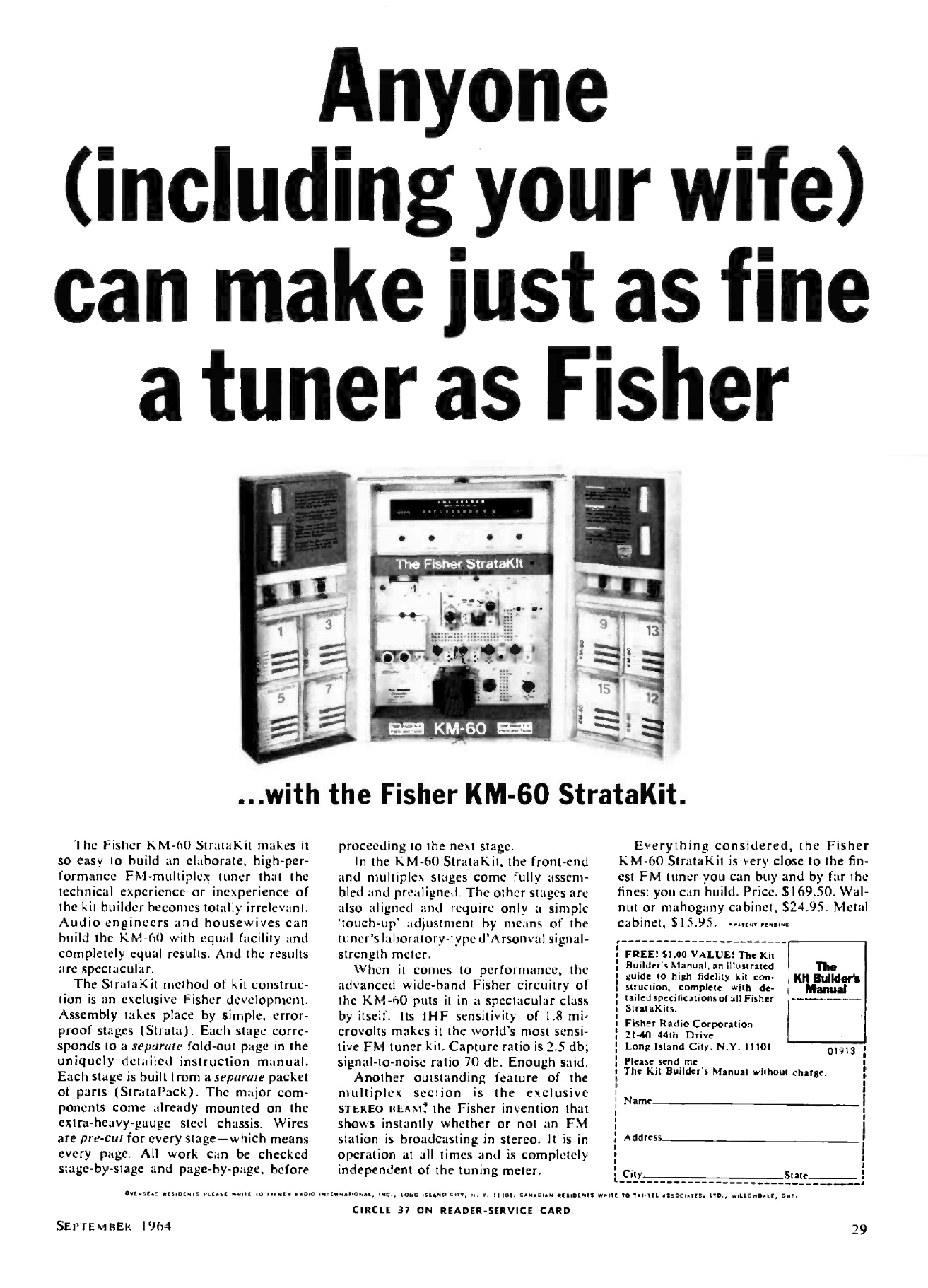
September 1964 ad for the KM-60. The headline of this ad likely would not pass muster in today’s world.
I recently acquired a KM-60. Upon looking it over, I noticed the latest date code on the IF transformers is the 9th week of 1964 (late February), so the tuner kit would have left the factory later than its newest part. Therefore, this StrataKit was likely purchased by its original owner in mid-1964. Consider (according to the above ad) that the price for the KM-60 was still $169.50 in the fall of 1964. That is equivalent to $1,422.87 in today’s dollars!
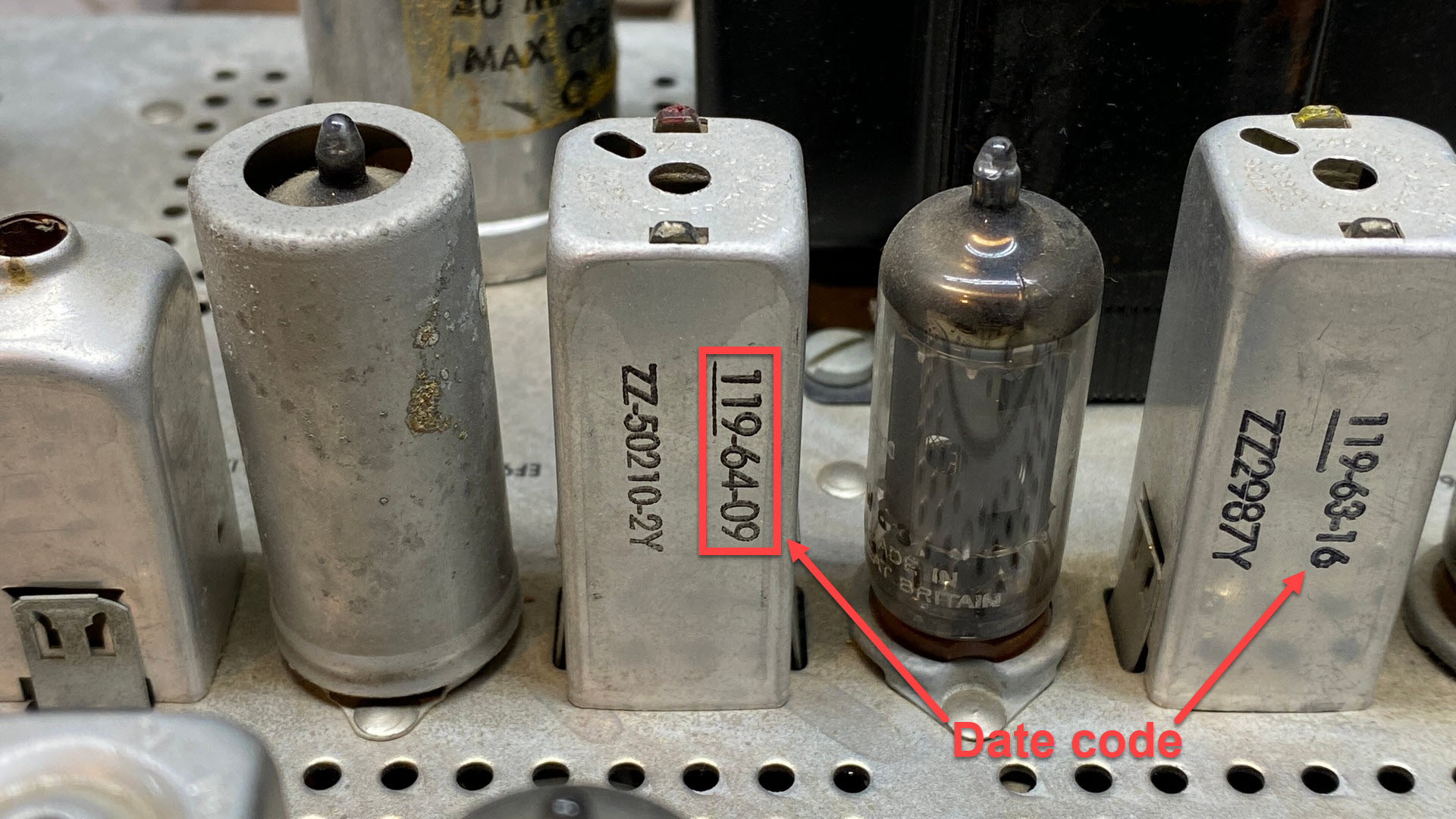
Date codes on some of the KM-60’s IF transformers. The one in the middle has the latest date code – 64-09, which indicates it was made on the 9th week of 1964 (late February). The IF transformer to the right has a date code of 63-16 – 16th week of 1963.The leading “119” is the EIA code for Automatic Manufacturing Corporation, makers of the K-Tran IF transformers.
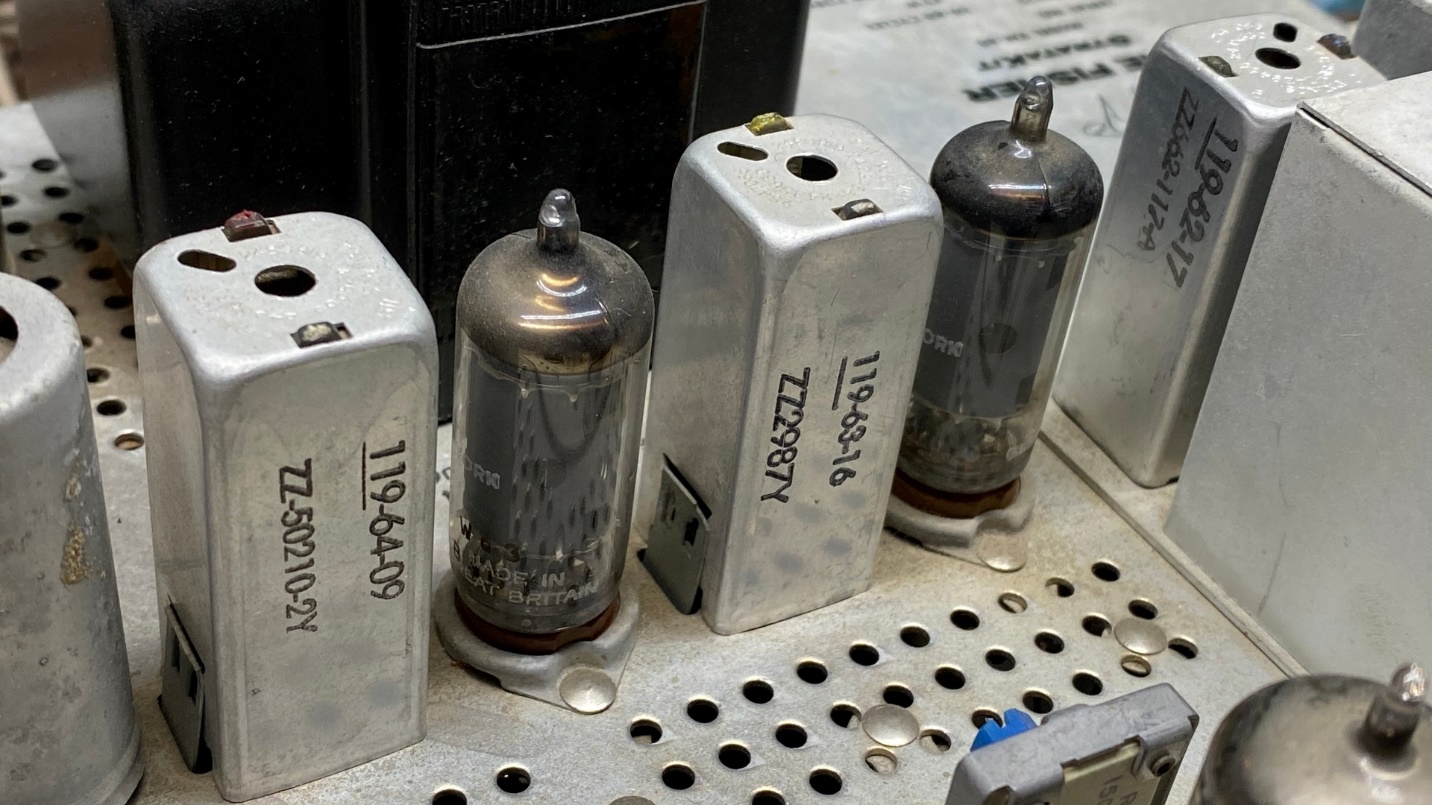
Another view of some of the KM-60’s IF transformers. The one at right in the photo above has a date code of 62-17 which indicates it was made on the 17th week of 1962. This is the oldest IF in the tuner. I find it odd that the IF transformers span almost two years, but obviously Fisher had some surplus 1st FM IF transformers and would have used them up before buying more.
I did something I usually do not do – I tried it out as is, before replacing any capacitors. Much to my surprise, I found that it works! Yes, the switches need cleaning, and the dial is off indicating the need for an RF alignment. But it was picking up several stations across the dial, so IF alignment may or may not be required. It would certainly help ensure the tuner is performing at its greatest potential.
But that will wait for another time. Sometime in the (hopefully) near future, this KM-60 will go back on my workbench and be given the proper treatment it deserves.